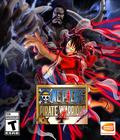
Genre: RPG
Publisher: NIS America
Developer: Gust
Release Date: May 29, 2007
 I can sum up Atelier Iris 3: Grand Phantasm in one word: "generic." From the very outset of your adventure — actually, scratch that — from the opening cinematic, you're hit with just about every conceivable Japanese RPG cliché. From the introductory sequence alone, we have a hero with gravity-defying hair and a sword so large it should really break his arms when he attempts to lift it, a heroine with improbably sized breasts that threaten to burst out from her skimpy top if she should ever deign to lean over, a white-haired sword-wielding villain and an impossibly cute monster that seems very much like a series mascot. Matters don't improve when you get into the game proper and it turns out that the hero is sullen and practically monosyllabic, while the heroine is perky and forgetful in that incredibly annoying way that game developers seem to think is cute. The entire world is populated with gaming stereotypes. Alcohol-supping, cheery, bearded blacksmith? Check. Bored, grumpy, beautiful woman? Check. Greedy merchant? Check. Semi-legendary local hero who just might be evil? Check. Even the plot revolves around collecting eight magical legendary items.
I can sum up Atelier Iris 3: Grand Phantasm in one word: "generic." From the very outset of your adventure — actually, scratch that — from the opening cinematic, you're hit with just about every conceivable Japanese RPG cliché. From the introductory sequence alone, we have a hero with gravity-defying hair and a sword so large it should really break his arms when he attempts to lift it, a heroine with improbably sized breasts that threaten to burst out from her skimpy top if she should ever deign to lean over, a white-haired sword-wielding villain and an impossibly cute monster that seems very much like a series mascot. Matters don't improve when you get into the game proper and it turns out that the hero is sullen and practically monosyllabic, while the heroine is perky and forgetful in that incredibly annoying way that game developers seem to think is cute. The entire world is populated with gaming stereotypes. Alcohol-supping, cheery, bearded blacksmith? Check. Bored, grumpy, beautiful woman? Check. Greedy merchant? Check. Semi-legendary local hero who just might be evil? Check. Even the plot revolves around collecting eight magical legendary items.
So, yes, Atelier Iris 3 is so generic that it makes Random Shooter 14 look positively groundbreaking, and it doesn't even have the common decency to do it with any panache. It being stuffed to the gills with clichés seems a little less surprising when you realize that despite being the third Atelier title released in the West, it is, chronologically, the 11th released in Japan and the ninth for a Sony system. Chances are that it invented at least one of the clichés it so rudely abuses. With all of that said, I think that this is where I should let you in on a little secret: It's actually somewhat enjoyable.
Let's start at the beginning. The main character, Edge, is a Hunter, which, despite the great title, seems to be a synonym for "odd-job man." There's monster hunting, certainly, but there are also whining bartenders demanding you find five steaks for them. Next up is the titular Iris who, like Edge, is a Hunter, but she also moonlights as an Alchemist. Again, despite the great title, "Alchemist" seems to just mean "a person who combines items in some way." Ever wrapped paper around some flowers to make them into a bouquet? Congratulations! You may now prefix your name with Alchemist. Oh, sure, Alchemy supposedly has something to do with magic but when you can choose to combine "Blossom" with "Paper" in the Alchemy menu to get a bouquet of flowers, I'm not convinced.
Nonetheless, Alchemists are apparently rare — so rare, in fact, that very few people in the game's single town actually believe that Iris is an Alchemist. Being that the poor girl has apparently lived there since she was born and has a gigantic Alchemy cauldron in the middle of her floor, she presumably doesn't get out much. Alchemy actually forms one of the title's few innovations, in that if Iris gets an idea into her head, she can make new items by combining old ones. Swapping out one or two items from an established recipe can also produce entirely new results, thus encouraging experimentation, and as alchemy items are thrown at you with ridiculous frequency, you don't have to worry too much about wasting anything important. It's been done in other games, certainly, but it's done with unexpected flair here, using a simple system that works well. Performing Alchemy raises Iris' alchemy level, which gives her new ideas and a boost to her stats, so it's well worth partaking of it.
Meanwhile, the Hunters' Guild is the driving force behind Atelier Iris 3's plot, but not in the way you might expect. The game is divided into chapters, and in each chapter your initial goal is to raise your Hunter rank. You do this by accepting quests from the Hunters' Guild, and these quests range from delivering an item to someone in town (which can usually be done fairly quickly through judicious use of alchemy) to killing a certain monster or group of monsters. Most are incredibly easy, which perhaps explains the usual quest reward: alchemy recipes. It's good enough, until you realize that this is a world where Alchemists are pretty much considered myths, and no one believes that Iris is one anyway. For your hard work, you are given something that is entirely useless to the person giving it to you, and which they presume to be useless to you. Apparently they know just how easy their quests are and have adjusted the reward appropriately.
The other things you get from finishing quests are guild points. Collect enough, and you rank up within the guild. Rank up within the guild, and you unlock that chapter's "mission," which is essentially a story-based quest. Finishing the mission completes that chapter of the game. What this means, in practice, is that you do a lot of random questing until the game arbitrarily grants you plot progression. It wouldn't be so irritating if it weren't for the fact that none of the quests you take from the Guild during the regular course of a chapter are plot-related anyway, as even a small few hints to link them into the main game would be a welcome recourse from what otherwise seems like the game forcing you to jump through hoops.
What is slightly more welcome is that the quests themselves can often lead you into a Diablo-esque trance of "just five more minutes." You may, for instance, come back from an Alterworld (dungeons) to get a quest reward, which you then realize is exactly what you needed to complete another quest. As you go to hand that in, you pass by the Guild and discover that another simple fetch quest has been put up, and you can easily make the required item with alchemy, so you'll go and do that, too. When handing that in, you realize you only need another quest's worth of guild points to unlock the next story mission, and ....
The Alterworlds themselves are, by turns, both smart and torturous. One mechanic which fuels both adjectives is that you're time-limited within them; you can only spend about five minutes within each, at a time, before you're unceremoniously booted back to town. It can be incredibly annoying when you've almost reached the location you needed for a quest, but it also tends to break up the monotony by only allowing you in each one for a short period at a time, and by adding in a bit more pressure to get to where you need to go. What really doesn't help, however, is the addition of some extremely dreadful platforming. The game features large and undeniably beautiful sprite-based graphics, but it just loves to hide platforms, items, enemies and anything else it can think of with some gigantic foreground graphics, and the camera angle is completely immobile. When you're against a fairly tight time limit and you miss a jump to an area you can hardly see for the 15th time, you don't really care how pretty the screen-obscuring tree is.
Combat itself is also run-of-the-mill. You have a Final Fantasy X-style list showing the order in which people will act, and you and your opponents take it in turns to hit each other. Different special moves take different amounts of time to complete, thus altering your tactics slightly — or that's the theory, at least. The reality is rather different; for most of the game, the combat is far too easy. It's almost impossible to lose a random encounter if you're paying any attention whatsoever, and you can even tackle most of the bosses with consummate ease as long as you remembered to bring along a stack of healing items and are smart enough to use Defend when you can see that the boss is about to drop a meteor on your head. There are some tricky moments, but they're few and far between. Once again, though, this just adds to the five-more-minutes syndrome, as once you know that you can race through whatever's up next quite quickly, you also become sure that just one more Alterworld trip won't hurt.
Really, the only area of Atelier Iris 3 that is genuinely faultless is the music, with even the most basic theme being not only memorable, but also evocative and fitting. I'd even go so far as to say that the music is reminiscent of the SNES classic Chrono Trigger on occasion, and that's high praise.
Sadly, first-class presentation can't save Atelier Iris 3: Grand Phantasm from disappointing mediocrity. It's is not a bad game by any stretch of the imagination, but it is a Japanese RPG on PS2, and the system is practically swimming in phenomenal games of the genre already. There's a little irony in that it might've been a great title for slightly younger gamers were it not for some frankly questionable design decisions, such as the masochistic fairy that turns up toward the beginning. As it is, though, Atelier Iris 3 is far too easy and simplistic for gamers experienced in the genre, and it brings nothing new to attract them, while there is already a vast swath of superior games for those new to this sort of thing.
Score: 6.0/10













































